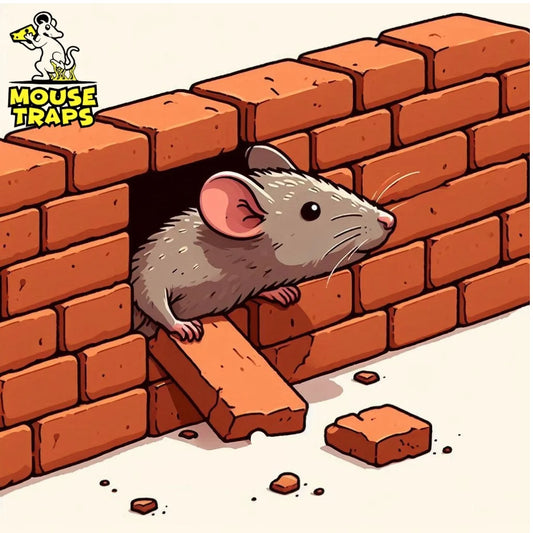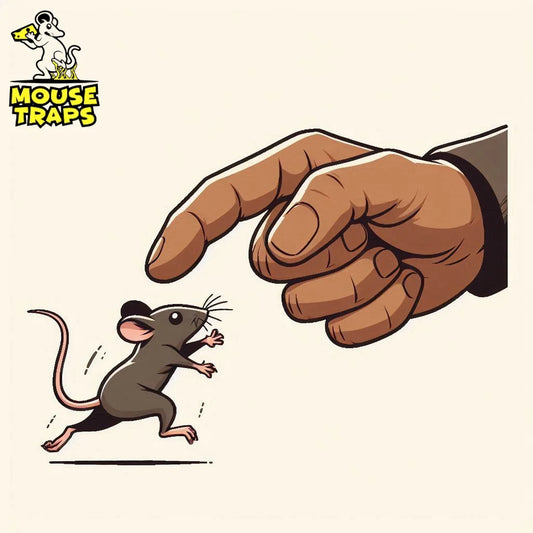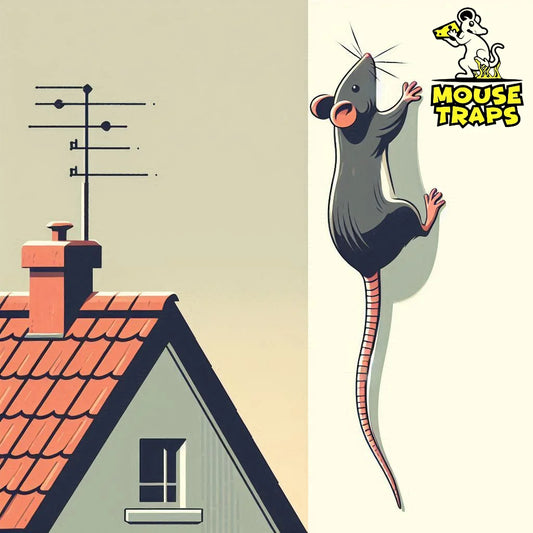Introduction:
Dealing with a mouse invasion can pose a challenge, for homeowners. The usual ways to handle mice like traps and poison baits may spark worries about the well being of animals and safety. Lately options such as mouse traps and sticky glue traps have become more favored, for their kinder and safer methods of management. In this piece we'll delve into the characteristics, advantages and factors to think about regarding both trap types to assist you in selecting the fit for your circumstances.
Methods used to store food to deter rats:
Seal Containers:
Rats have an excellent sense of smell and can detect food from a considerable distance. Storing food in airtight containers prevents the scent from escaping, reducing the likelihood of attracting rats. Opt for containers made of materials like glass, metal, or thick plastic, as rats can chew through softer materials.

Elevate Storage:
Rats are adept climbers and can easily access food stored on shelves or countertops. To deter them, store food items off the ground and away from walls. Consider using shelving units with smooth surfaces that rats cannot grip easily. Keeping food storage areas organized and clutter-free also makes it harder for rats to navigate.

Regular Cleaning:
Food spills and crumbs are irresistible to rats. Regularly clean food storage areas to remove any spills or crumbs that could attract them. Pay special attention to areas around appliances, cabinets, and pantry shelves. Sweep or vacuum floors frequently, and wipe down surfaces with disinfectant to eliminate food odors.

Secure Garbage Bins:
Rats are opportunistic feeders and will readily scavenge through garbage for food scraps. Use sturdy, tightly sealed garbage bins to prevent rats from accessing food waste. Make sure bins have secure lids that are kept closed at all times, and consider using bungee cords or other fasteners to keep lids in place if necessary.

Inspect for Entry Points:
Rats can squeeze through surprisingly small openings, so it's essential to inspect your home for potential entry points. Seal any gaps or cracks in walls, floors, doors, and windows that rats could use to gain access. Use materials like steel wool, wire mesh, or caulk to block entry points effectively.

Trim Vegetation:
Overgrown vegetation around your home provides rats with hiding spots and easy access to your property. Keep shrubs, trees, and other vegetation trimmed back to reduce potential hiding spots and entry points. Trim branches that overhang your home or storage areas, as rats can use them as pathways to access higher areas.

Regular Monitoring:
Monitor food storage areas regularly for signs of rat activity, such as droppings, gnaw marks, or nests. Pay attention to any changes in food packaging or evidence of contamination. Detecting rat issues on enables you to tackle them before they escalate into concerns.

Professional Help:
If you're dealing with a persistent rat problem despite your efforts, don't hesitate to seek assistance from pest control professionals. They possess the knowledge and tools needed to pinpoint the underlying problem. Put in place solutions. Professional pest control offerings might involve securing your home, against rodents setting up trapping or baiting strategies and offering monitoring and upkeep.

Live Mouse Traps:
Live mouse traps are humane devices designed to catch mice without harming them. These traps typically consist of a box or cage with a spring-loaded door that closes once the mouse enters the trap. Some traps use a one-way entry system, while others allow mice to enter freely but not exit. Live traps are typically reusable and can be placed indoors or outdoors.

Benefits:
- Humane: Live mouse traps offer a humane alternative to traditional snap traps or poison baits. They catch mice without harming them so you can set them free unharmed, in the wilderness.
- Reusable: Unlike single-use snap traps or glue traps, live mouse traps are reusable and can be used multiple times. This makes them a budget friendly choice, for maintaining populations in the run.
- Safe: Live traps are safer to use around children and pets compared to snap traps or poison baits, which pose a risk of accidental injury or ingestion.
- Easy to Use: Live mouse traps are relatively easy to set up and require minimal maintenance. Once a mouse is caught, you can release it by opening the trap door without having to handle the rodent directly.
- Indoor and Outdoor Use: Live traps can be used both indoors and outdoors, making them versatile for addressing mouse infestations in various locations, such as homes, garages, sheds, or gardens.
Sticky Glue Traps:
Sticky glue traps, also known as adhesive or glue boards, are flat surfaces coated with a sticky adhesive substance. When mice step onto the trap, they become stuck to the adhesive, preventing them from escaping. Glue traps are typically disposable and are available in various sizes and shapes to target different types of rodents.

Benefits:
- Non-Toxic: Sticky glue traps are non-toxic and do not contain any chemicals or poisons, making them safer to use in homes with children and pets.
- Easy to Use: Glue traps are easy to set up and require no baiting or additional equipment. Simply place the traps along walls or in areas where mouse activity has been observed.
- Versatile: Glue traps can capture not only mice but also other pests such as insects, spiders, and small reptiles. Their adaptability allows them to effectively tackle a range of pest issues.
- Disposable: Once a mouse is caught on a glue trap, the trap can be disposed of easily and replaced with a new one. This makes cleanup quick and convenient.
- Indoor Use: Glue traps are primarily intended for indoor use, making them suitable for controlling mouse infestations in homes, offices, warehouses, and other indoor environments.
Conclusion:
When it comes to choosing the right mouse trap, both live traps and sticky glue traps offer unique benefits and advantages. Using traps presents a kind and eco method to catch mice whereas sticky glue traps offer a safe and adaptable solution, for indoor settings. The ideal trap choice, for your circumstances will be influenced by your requirements, preferences and the extent of the mouse issue. By weighing these factors you can efficiently tackle mouse concerns in your residence while prioritizing the safety and welfare of both people and animals.




